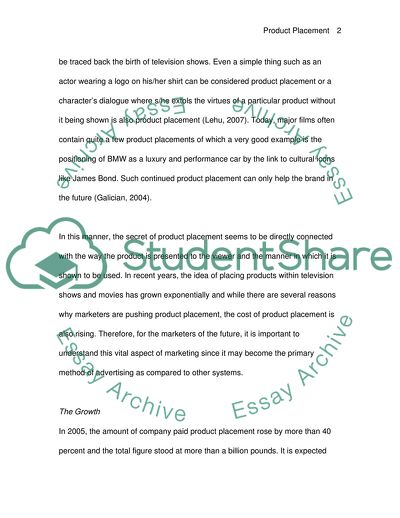Cite this document
(The Growth of Product Placement Term Paper Example | Topics and Well Written Essays - 2026 words, n.d.)
The Growth of Product Placement Term Paper Example | Topics and Well Written Essays - 2026 words. Retrieved from https://studentshare.org/marketing/1707765-describe-and-anylyse-the-growth-of-product-placementin-europe-and-north-america
The Growth of Product Placement Term Paper Example | Topics and Well Written Essays - 2026 words. Retrieved from https://studentshare.org/marketing/1707765-describe-and-anylyse-the-growth-of-product-placementin-europe-and-north-america
(The Growth of Product Placement Term Paper Example | Topics and Well Written Essays - 2026 Words)
The Growth of Product Placement Term Paper Example | Topics and Well Written Essays - 2026 Words. https://studentshare.org/marketing/1707765-describe-and-anylyse-the-growth-of-product-placementin-europe-and-north-america.
The Growth of Product Placement Term Paper Example | Topics and Well Written Essays - 2026 Words. https://studentshare.org/marketing/1707765-describe-and-anylyse-the-growth-of-product-placementin-europe-and-north-america.
“The Growth of Product Placement Term Paper Example | Topics and Well Written Essays - 2026 Words”, n.d. https://studentshare.org/marketing/1707765-describe-and-anylyse-the-growth-of-product-placementin-europe-and-north-america.


